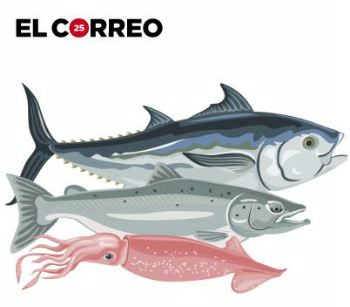|

How to prevent anisakis from sneaking onto your plate
 SPAIN
SPAIN
Sunday, May 23, 2021, 19:00 (GMT + 9)
The following is an excerpt from an article published by El Correo:
The increased presence of the parasite in fish and the tendency to eat it raw has increased allergies
Esther Gómez's life changed at an aperitif. And all for having some olives with anchovies. He was 28 years old (today 44) and since then he has lived with an allergy to anisakis simplex, a parasite that lives in the viscera and muscles of sea fish and in cephalopods (octopus, cuttlefish, squid ...) and that generates digestive disorders , allergic or both.
 FIS Seafood_Media(1).jpg) In Spain, it is estimated that the prevalence of allergy to anisakis is between 11% and 16%, although the incidence varies according to the frequency of fish consumption in the different autonomous communities. Of course, "it is important to differentiate between sensitization –the genetic predisposition that a person has to develop allergies to a certain allergen and which is verified with positive allergy tests and without symptoms– and allergy –hypersensitivity, which implies tests of positive allergies and symptoms ”, highlights Olga Uriel, member of the food allergy committee of the Spanish Society of Allergology and Clinical Immunology (SEAIC). Thus, sensitization can vary from 13% to 22%, depending on the area. In Spain, it is estimated that the prevalence of allergy to anisakis is between 11% and 16%, although the incidence varies according to the frequency of fish consumption in the different autonomous communities. Of course, "it is important to differentiate between sensitization –the genetic predisposition that a person has to develop allergies to a certain allergen and which is verified with positive allergy tests and without symptoms– and allergy –hypersensitivity, which implies tests of positive allergies and symptoms ”, highlights Olga Uriel, member of the food allergy committee of the Spanish Society of Allergology and Clinical Immunology (SEAIC). Thus, sensitization can vary from 13% to 22%, depending on the area.
These figures have increased in recent years around the world due to the higher incidence of the parasite in caught fish - with infestation levels of up to 89% in some cases - and due to the appearance of new gastronomic trends based on fish consumption. raw or semi-raw. Japan tops the list, of the more or less 20,000 cases of anisakis contamination that are detected each year globally, more than 90% occur in Japan.
.png)
Click the image to enlarge
“Anisakis allergy occurs in people who have been exposed to the parasite due to eating infested fish. When it occurs, the immune system generates an abnormal response and produces a type of antibodies called IgE, which it recognizes as strange foods that it previously tolerated,” explains the allergist.
Given this circumstance, the possible clinical pictures are: anisakiosis, allergy or gastroallergic anisakiosis (if both occur). “Depending on the place where the larvae lodge, anisakiosis can appear gastric (the most common) and translate into abdominal pain, nausea and vomiting between 6 and 12 hours after ingestion of the parasitized fish; or intestinally, which can cause nausea, vomiting, abdominal pain, low-grade fever and even intestinal obstruction (blockage that does not allow food or liquid to pass through the intestine) between 48 and 72 hours after ingestion. "Due to their location, these manifestations can be confused with acute appendicitis," Uriel emphasizes.
.png)
Click the image to enlarge
For their part, those who develop an allergic reaction usually have skin symptoms (hives, hives, with or without swelling, angioedema ...), although there are also more serious cases of anaphylaxis (difficulty breathing) and even hypotension and 'shock'. "These usually occur between 15 minutes and up to 6 hours after eating fish," warns the specialist. (Continues ...)
Authors: Text: Elena Martín López and graphic: Isabel Toledo | Read the full article by clicking on the link here (original only available in Spanish)
[email protected]
www.seafood.media
|
|



